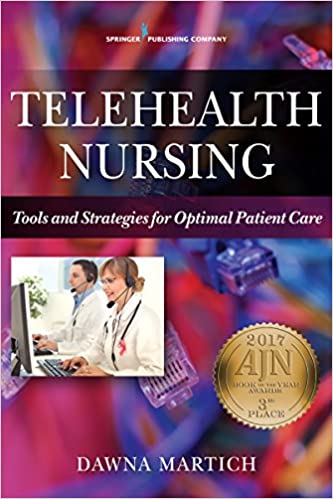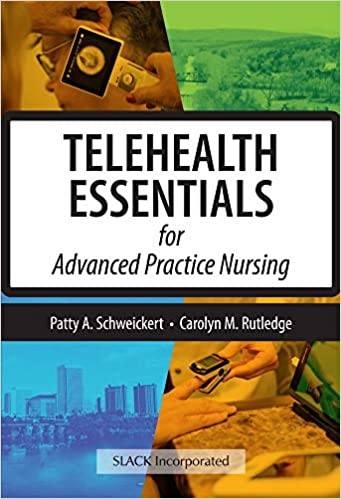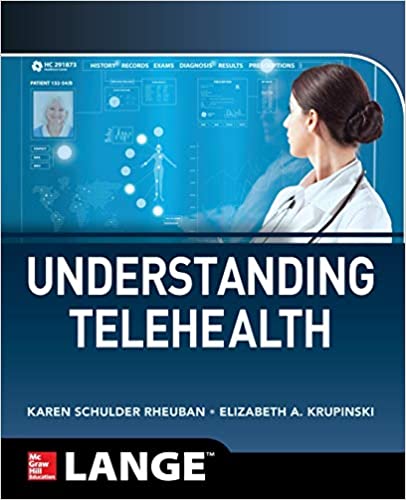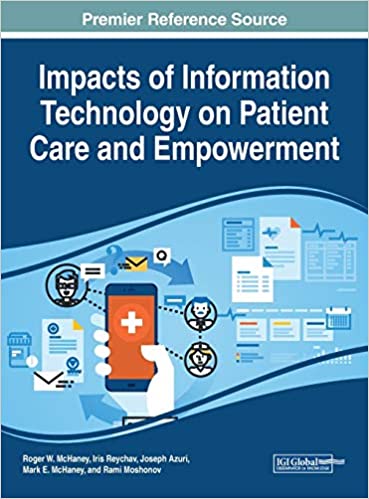5 best laptops for telehealth
Welcome to the ultimate guide to the 5 best laptops for telehealth that you can easily purchase right now. We live in a world of technology, and laptops are an essential part of our lives. Although smartphones are taking over at a remarkable pace, we still require laptops for most of our tasks, like teleconferencing, note taking and more.
Hence, we can say that even with smartphones, tablets and other gadgets swarming the technological world, laptops have stood their ground and are still an essential part of our everyday work life.
With so many different factors to consider, it is getting difficult to choose laptops nowadays. Therefore, we have reviewed and made a list of the 5 best laptops available.
Best Laptops Product Review
1. Apple MacBook Air (13-inch, 8GB RAM, 256GB SSD Storage)

Product Features
Design
Apple MacBook Air has a unique aesthetic design with a Retina display and True Tone Technology. You will find two Thunderbolt 3 ports to the left, which means that it’s possible to run a 6K display on a MacBook Air. A headphone jack is located on the right to plug in your wired headphones.
Keyboard
The keyboard of Apple MacBook Air is the standard, reliable, and satisfying type. The keys have 1mm of travel and include the inverted-T arrow key, which makes it much better than the butterfly keyboard featured in the previous versions. Also, the volume and brightness keys are located on the keyboard, making it easier to adjust sound and brightness. The trackpad is enormous, and it feels excellent to scroll and click on it.
Processor
The Apple MacBook Air has an impressive selection of processors, including three special versions of Intel’s 10th-generation Y-series chips. This means that you can customize the specifications of your system with a 1.2GHz quad-core Core i7. The original 1.1GHz quad-core Core i5 chip and 8GB of RAM can work easily with software like Lightroom and Zoom. The processing of the Apple MacBook Air makes it one of the best laptops for telehealth today.
Thermal Throttling
The Apple MacBook Air comes with built-in thermal throttling technology. This technology enables the system to perform a task at a full boost of 3. 2 GHz and then ramp it down to 1.1 GHz. All this is to preserve the heat and battery life.
Pros
- Fast processor
- New keyboard design
- Affordable price
Cons
- Webcam could have been improved
2. New Apple MacBook Pro (13-inch, 8GB RAM, 256GB SSD Storage, Magic Keyboard)

Product Features
Configuration
The New Apple MacBook Pro includes a 1.4-GHz 8th-gen Core i5 processor, 8GB of RAM and a 128GB SSD, which can be upgraded to 256GB at an additional price. Also included are 2 Thunderbolt ports, which can also be upgraded to 4 ports. The additional features in the new Apple MacBook Pro make it one of the 5 best laptops for telehealth today.
Design
The 13-inch MacBook Pro has an elegant look with a solid unibody aluminum chassis. It is portable and light enough to be carried in a backpack. It has two Thunderbolt 3 ports on the left and a headphone jack on the right.
Display
The MacBook Pro has a 2560 x 1600-pixel Retina Display on the 13-inch screen, which is the best in recent laptops. It supports a 4k display, which shows even the minor details clearly.
Audio
The MacBook Pro comes with dual speakers that are capable of producing a rich and subtle sound. The music doesn’t get distorted or takes over the vocals even at max volume.
Touch ID
The Touch ID sensor used to be included in premium versions of MacBook, but now they are a part of the entry-level model. The Touch ID enables you to unlock your MacBook, App Store, iTunes, and Apple Pay without relying on a password.
Pros
- Good battery life
- Fast performance
- Powerful speakers
- Impressive display
- Touch ID
Cons
- Shallow keyboard travels
- Thick bezels
3. HP 14-inch HD Touchscreen Premium Laptop

Product Features
Design
The HP 14-inch HD Touchscreen Premium Laptop has a beautiful intricate design. The edges of the hood curve as they meet each other, giving it an hourglass design. The keyboard section is carved out, and the bezels are thin as compared to other models. We really liked the design which put this up there as one of the 5 best laptops for telehealth.
Ports
There are a decent number of ports on this HP laptop, including a USB 3.1 Gen 1 Type-C port, 2 USB 3.1 Gen 1 Type-A ports, a headphone/microphone combo jack, an HDMI 1.4 port and an RJ45 port.
Display
This HP Premium Laptop has a 1366 x 768 display, with a 14.0-inch diagonal HD SVA BrightView micro-edge Touchscreen. It has a glossy texture, and there’s a significant glare, but the display is still sharp enough to show details.
Keyboard and TouchPad
The HP 14-inch HD Touchscreen Premium Laptop has a smooth keyboard that requires a decent amount of force and 1. 4 mm travel to hit bottom. The TouchPad has a semi-matte texture with Windows Precision drivers to handle Windows 10 gestures nicely.
Pros
- Amazing audio quality
- Comfortable keyboard
- Impressive performance
Cons
- The battery life is quite low
- The display is relatively dull
4. Lenovo Flex 5 14″ 2-in-1 Laptop

Product Features
Flexibility
The flexibility features make the Lenovo Flex 2-in-1 Laptop stand out of the crowd. The 360-degree hinge makes it more flexible than a conventional clamshell laptop. Due to this feature, you can prop it up like a tent, stand it up like an easel and fold it flat to be used as a tablet. The chassis is bulky so that the hinge can be sturdier. The flexibility of this device make it one of the 5 best laptops for telehealth.
Design
Many people think that bulky chassis may affect the laptop’s look, but that is not the case with Lenovo. It has a soft-touch plastic coating on the sides and around the keyboard. The Graphite Gray color makes it look dark and moody, but you can get the Platinum Gray color if you’re more into lighter tones.
Ports
There are several ports on the Lenovo Flex 2-in-1 Laptop, including a power port, HDMI 1.4 port, a USB Type-C port and an audio combo jack on the left. The right side includes 2 USB 3.1 Gen 1 Type-A ports, a full-size SD card reader and the power button.
Pros
- Touch input
- Two USB Type-A ports
- Webcam privacy shutter
- Affordable
- Durable
Cons
- A bit heavy for a 14-inch ultraportable
- The display is a bit dim
5. New Apple MacBook Pro (16-inch, 16GB RAM, 1TB Storage, 2.3GHz Intel Core i9)

Product Features
Keyboard
The New 16-inch Apple MacBook Pro has a magic keyboard, which has been designed, keeping in mind Apple’s desktop keyboards. The keys are soft and stable, with a new concave keycap design, with rubber domes underneath each key. The layout of the keyboard includes a real Esc key and an inverted-T setup for the arrow keys.
Display
The New Apple MacBook Pro has a resolution of 3072 x 1920 and can stream 11 4K videos simultaneously. It has a slim border that can make the videos pop up and pay attention to detail. The MacBook Pro’s screen can reproduce 113.9% of the sRGB color gamut, which is quite impressive.
Ports
The New Apple MacBook Pro has four Thunderbolt 3 ports with USB-C connections. And that’s about it.
Performance
The New Apple MacBook Pro is one of the most powerful laptops among its competitors. You can choose between a 6-core Core i7 or an 8-core Core i9 processor. A brand new model usually comes with a 16 GB RAM, but you can upgrade it up to 64 GB. This particular model has an SSD storage of 1TB, making it one of the fastest SSDs in the world. Keeping the performance in view, we can say that this laptop is ideal for video editors.
Pros
- Amazing magic keyboard
- Large 16-inch display
- Slim bezels
- Best sound
- 11-hours battery life
Cons
- No port for full-size USB and SD card
- Heavy
Comparison chart of the 5 best laptops for telehealth
| Product Name | Dimensions | Weight | Resolution |
| 1. Apple MacBook Air (13-inch) | 12.76 x 2.4 x 9.09 inches | 5.24 pounds | 2560 x 1600 |
| 2 .New Apple MacBook Pro (13-inch) | 13.41 x 9.76 x 2.41 inches | 5.99 pounds | 2560 x 1600 |
| 3. HP 14-inch HD Touchscreen Premium Laptop | 12.76 x 8.9 x 0.78 inches | 3.25 pounds | 1366 x 768 |
| 4. Lenovo Flex 5 14″ 2-in-1 Laptop | 12.66 x 8.56 x 0.82 inches | 3.63 pounds | 1920 x 1080 |
| 5. New Apple MacBook Pro (16-inch) | 9.68 x 14.09 x 0.64 inches | 7.9 pounds | 3072 x 1920 |
Buying Guide
With so many laptops available out there, it can get challenging to choose the best laptop for yourself. Therefore, we have created this handy guide so that you are aware of the ins and outs of the laptop you’re contemplating to buy. Here are some essential tips to get the best laptop for you:
Display Size
Laptops have different display sizes. You can choose one which suits you best. 11 – 12 inch screens are thin and lightweight, ideal for traveling.
When it comes to usability and portability, 12.5 to 14 inch screens are the best. But if you’re not a frequent traveller, you can opt for larger screens like 15 – 16 inch.
Lastly, if your laptop stays on your desk the whole time, you can go for 17 – 18 inch screens.
Operating System
Choosing between Windows, MAC or Chrome OS is a personal choice. But if you want to go for flexibility, then choose Windows as it is compatible with most laptops compared to MAC and Chrome OS.
2-in-One
Laptops can be clamshells or 2-in-1 hybrids. The difference is that a 2-in-one can switch between clamshell mode, tablet mode, tent mode and stand mode. In some models, the screen can be detached as well. But if you’re the traditional type and don’t want to use your laptop as a slate, you can always opt for the conventional clamshell laptop.
Keyboard and TouchPad
If most of your work is done on a laptop, you need to get one with good ergonomics. Choose a laptop with a keyboard with a 1 – 2 mm key travel and enough space between the keys. The TouchPad should be accurate and should respond consistently to multitouch gestures.
Frequently Asked Questions (FAQs)
1. What is a Hybrid Laptop?
A hybrid laptop or a 2-in-1, can be used as a laptop or a standalone tablet. They can switch between different modes, like clamshell, tablet, tent or stand mode. The screen can also be detached so that it can be used as a tablet.
2. What are the minimum specs required for a laptop?
If you’re buying a laptop for the first time, the minimum requirements are:
- Windows 8.1 operating system
- Core i5 processor
- 8GB RAM or higher
- 512 MB Video Memory
These are the minimum requirements, but you can always upgrade with time.
3. What is a good processor speed for a laptop?
The CPU is the brain of the computer, so its speed is very essential to improve functionality. The clock speed determines how quickly a CPU can retrieve and interpret instructions. Therefore a clock speed of 3.5 to 4 GHz is considered a good processor speed for a laptop.
4. What makes a laptop faster – A RAM or a processor?
The speed of the RAM is directly proportional to the speed of the processor. This means that the faster the RAM, the faster the processing speed. A faster RAM means that the speed with which the memory sends information to other parts of the system is also increased. Hence, RAM makes a laptop faster because other components are dependent on it.
Conclusion
Buying the perfect laptop can be quite challenging. Even if you have specific requirements, you will face a myriad of models that will fit those requirements. So with our review of the 5 best laptops and buying guide, we hope that you will be able to differentiate between good and bad and make an informed decision. Learn more about other telehealth options with Telehealthist.com.
Get Healthcare Reviews

In recent years, there has been a focus on how to get healthcare reviews which has transformed the way patients choose their healthcare providers. Only a decade or so ago, patients had to rely on word of mouth to make informed decisions for their own safety or the safety of their loved ones. Now, however, the internet has allowed patients to search providers with ease.
From the comfort of a smart phone and with the simplicity of Google, patients are making incredibly informed decisions and using reviews from sites to choose where to get care. Studies have shown that nearly five percent of all Google searches are health-related, and many of these searches are of reviews of doctors and practices. Here’s an article as to how to get healthcare reviews for your practice.
Why do reviews matter?
Like many different highly professional businesses, the healthcare industry can often look intimidating to those on the outside. This problem is compounded because those looking for care are already anxious about their general wellbeing and terrified of lackadaisical or overly expensive care.
Most have heard horror stories of about missed diagnoses or insane overcharges from friends and family; these people are desperate to avoid these factors of the healthcare industry and look to reviews to ensure they’re getting quality care. If your healthcare company is not utilizing consistent and positive reviews, they’re missing out on crucial social proof of the quality work employees are putting in every day. Get healthcare reviews so that you are leaping ahead of the competition.
Helping your practice expand
In today’s day and age, the search for a doctor begins online. This means your practice needs to be search engine optimized and a giant factor in this process is making sure you have a plethora of customer reviews at your disposal. In fact, reviews are generally the third largest factor in determining your search engine ranking because they’re always filled with fresh and unique content that algorithms favor.
Practices with more reviews and higher ratings have a massive advantage when it comes to search ranking. Even if your practice has been successful for the last several years, it’s still important to up your review game, as the phrase “near me,” increased 350% in the last year according to Google Analytics. Preparing for how to get healthcare reviews will boost your results. Your practice will almost certainly miss showing up in these searches without reviews, and you’ll miss out on patient care.
Staying HIPAA compliant
Security concerns are always a priority when participating in any online activity. Healthcare organizations and practices are frantic to stay within HIPAA’s guidelines and ensure they’re not partaking in an unethical or illegal practice. That being said, requesting and sharing reviews online from former patients is absolutely legal and in no way violates HIPAA. However, you can get healthcare reviews without violating HIPAA.
Not only are reviews not a violation, asking for patient feedback and having them take the time to fill out a quick form is one of the easiest ways to improve your practice and enhance your care for future visitors. In addition, once a review is posted publicly, it’s not a violation to share it on social media or on your website.
Start collecting reviews
While it’s absolutely true that reviews are a great way to build trust between you and your clients and patients who use your practice, it’s not always natural or expected for patients to leave reviews of their healthcare provider. Your practice will need to be proactive in collecting reviews to ensure you have a large back catalogue and plenty of new content to stay relevant in search results. One of the main problems with how you get healthcare reviews on the patient end is that treatment doesn’t feel transactional – it doesn’t feel like they’re giving your practice anything for the care – because payment is handled by the insurance company.
To circumvent this awkward feeling, simply start sending text messages to your patients once discharged asking for their feedback. A well written request for their thoughts should be plenty to start the process. A direct link to Google is usually the most effective method way to get healthcare reviews; just make sure you don’t take up too much of their time and don’t ask in too intrusive a manner.
Respond to reviews
There are many benefits to responding to reviews after you’ve collected a fair amount. First, your practice will be more visible because Google has made recent changes to its algorithm. Long story short, responding to reviews will instantly allow your company to jump in the search results. Responding to reviews is also a great, organic way to respond to negative feedback and be proactive about improving your practice.
Understand that an extremely negative review can oftentimes be resolved with a quick response and smart communication on the part of your practice. Once the issue is resolved, severely low reviews will often be edited to higher scores. The patient will not only look at your practice in a positive light, your proactiveness will be perceived as going above and beyond, which will enhance word of mouth and spread the reach of your company.
“Social Proof”
Utilizing reviews is all about convincing potential patients that your practice is the safest, cleanest, and most experienced practice in the area. This process is bolstered by several steps you can take such as displaying your reviews in a prominent place on your website; put them somewhere that will be seen directly by the customer without much extra navigation or digging through the site.
You should also make a concerted effort to post your highest reviews, as publicly flaunting low reviews can be counterproductive to your goals. Social media platforms such as Facebook and Twitter are great places to post your positive reviews and draw attention to your practice. Going so far as to create an entire category within your site for reviews and testimonials is a great way to direct attention to your happiest clients and ease the fears of potential patients.
Top Healthcare Review Websites
- Google: Technically, Google is the world’s largest review site. Google is the primary search engine the general public uses to access information and decide where to spend their money.
- Facebook: Facebook is one of the most engaging social media platforms on the web right now. In addition to its engagement, it’s the second largest review site in the world.
- Healthgrades: This is a grade website to use because it’s specific to the healthcare landscape. Doctors and dentists use this site to spread the word about their company and collect important feedback on their practices.
- Vitals: Another healthcare-specific site, Vitals allows professionals in the field to write their own reviews and is home to more than nine million patient reviews.
- Yelp: Although the power of this once prominent review site has faded slightly, Yelp is still one of the top review sites in the world and is closely associated with Google and Apple Maps, presenting information when patients and consumers need to find your location.
Final thoughts on how to get healthcare reviews
The simplest thing to do is to prepare for reviews (both good and bad). We feel that transparency is the best way to get healthcare reviews and it starts by focusing on customer service. If you are prepared, then you will be ahead of the curve and ready to get healthcare reviews. Learn more online or get free courses telehealthist.com.
Healthcare Public Relations Strategy

Growing your telehealth business can be a constant struggle. Although the technology is improving every day and the need for your company’s services are crucial during the pandemic, demonstrating the importance of telehealth to many hospital administrators and healthcare professionals alike remains a difficult task. There are a variety of different marketing strategies you can use to grow your practice, including video campaigns and education of clients, but an underutilized method for selling telehealth today is an effective and strategic healthcare public relations campaign. Here’s a handy guide for developing and implementing a healthcare public relations strategy to help sell your telehealth business.
Let your story come first
There are many amazing uses for telehealth today. The technology is being used like never before to help areas effected by natural disasters and biological quarantines. These and other hazards make for great stories you can share with clients when you stress the importance of telehealth for their business. Understanding this will help you improve your healthcare public relations results.
It’s not enough to get your business out in front and garner excessive attention; you must also present a story, a narrative which will entice your audience and your consumers to remember, respect, and interact with your company in the long term. The story you tell can be based in fact, outcomes, or data, or relate to a larger story or challenge. Your story can even demonstrate your company’s unique value impacts the healthcare industry – as long as you have content worth sharing, people will listen and respond in kind.
Find great spokespeople
Along the same lines as having a great story, make sure your company has great outward communicators. Many companies today trod out phony spokesmen who tow the corporate line and give no one information they don’t already have or simply don’t wish to hear. Consumers and the media want to hear from interesting characters and be spun an engaging, intriguing tale from top to bottom.
The best spokespeople are not only interesting, they teach their audience about the field they’re working in, through harrowing stories and education about the tech currently present in the field. Your spokespeople should be knowledgeable, articulate, and passionate, bringing awareness to your company and brand while conveying key messages. Being proactive in acquiring great spokespeople is a crucial step to formulating a winning healthcare public relations strategy and campaign. This is a critical part of your healthcare public relations strategy.
Utilize all channels
In the old days, reporters were mostly isolated, preferring their communications come through e-mail so they didn’t have to deal with the average headlines ordinary companies and days would generate. Today, however, social media lets anyone gain access to many top members of the media through platforms like Facebook, Twitter, and LinkedIn.
Your company should be utilizing these channels to spread your message far and wide, garnering a following by using all of the resources at your disposal. Reporters today are looking for a story, an angel to hook more viewers and improve their own company’s brand. Healthcare is front and center because of the pandemic, so be sure to strike while the iron is hot.
Be aware of deadlines
There may be times when your company simply cannot keep up with the hustle and flow of the average workweek. Don’t be afraid to reschedule interviews or other planned healthcare public relations engagements if the workload becomes too unmanageable, as tiring your team will decrease efficiency and dig the hole deeper. Keep in mind, however, that most rescheduling can be avoided by shifting priorities and moving around other dates. Trust takes time to build and even longer to repair once shattered, so always prioritize reporters and other healthcare professionals. Just like your telehealth workers, you must find the time if the time can be found.
Submit for awards
Healthcare public relations campaigns are all about showing off to your peers and the world outside your industry. If your company qualifies for an award, it’s never a bad idea to apply, as each award you receive will generate additional clout and trust between you and your current and potential clients.
The award may also garner media attention and increase word of mouth, expanding your company’s reach and profit margins. Finally, the juries which hand out many awards in the healthcare industries are also potential clients. Putting your new product or service out there for them to see will instantly net you some fresh eyes even if you don’t win the award.
Build relationships before the pitch
In life, the saying goes, it’s not about what you know, but who you know. In the cutthroat world of healthcare public relations this saying holds absolutely true. Building a relationship with reporters will always enhance your chance of getting positive coverage and having the story be picked up to begin win. Even if your company believes it has a firm relationship with some or many reporters and media currently, there is always room for improve.
Every kind word spoken and generous deed done is another chance to build a relationship that will foster your company’s growth and lead to more pronounced media attention. Remember to stay abreast of your industry as well: always read current headlines within the healthcare industry, share and post appreciative comments on stories, and offer a token of gratitude without expecting any compensation.
Use every platform
In the modern age, everyone gets information from several different sources. Different demographics turn to different platforms to catch up on the news of the day and your company should be present in all of these to ensure maximum views and potential sales. You can repurpose existing material or create new content to shape your presence across a variety of media channels, including television, scientific literature, and the internet. Even social media, e-mail, and newsletters are great for reaching new clients and expanding into channels you never thought possible.
Measure your reach
Once you’ve taken the initiative spread the good name of your company far and wide using all available platforms and media angles, it’s time to measure your results. There are various tools you can use to track placements in publications and on social media, as well as measure the share of voice, reach, and exposure your company has garnered at any given point. You don’t need advanced analytics to tell you where and how you’re succeeding.
The simplest but sometimes most effective metric can be as easy as a coveted healthcare publication’s readership. This measurement is particularly effective when the publication caters to key decision makers and influences within the community.
Telehealth has never been more important in the modern world. Spreading the word about your telehealth company and attracting great healthcare public relations strategy is as easy as building relationships, using all available channels, and taking advantage of every opportunity presented to you.
You can read more about healthcare public relations article online or take our free courses at telehealthist.com.
Using Healthcare Influencer Marketing

Businesses today are doing all they can to attract customers; all avenues of communication are being utilized and every platform and tool at their disposal is being used to connect with audiences and expand their business in a timely and effective manner. The primary problem today to those involved in telehealth is figuring out what method they want to use to appeal to their consumers. While there are many methods available, one of the most effective is influencer marketing.
This handy guide will tell you all you need to know about healthcare influencer marketing: what it is, why you should use it, and how you can make it work for you.
What is healthcare influencer marketing?
Generally, and in the case of telehealth, using healthcare influencer marketing is a method of marketing which uses others promote a product or service. These “influencers” have the ability to shape the perception of your brand and spread your reach to audiences who you would never think to market to in the first place.
They can forward your brand by discussing key benefits and appealing to their authority within the communities who look up to them and follow what they say and do. Michael Jordan and Steph Curry are examples of influencers in the basketball world, as their popularity and trusted skill level make them effective marketers for the selling of shoes and other basketball related products.
In our world, using healthcare influencer marketing is nothing new. It’s been around for decades, though its evolution has been pronounced within the last few years. For example, candidate Bob Dole filled TV spots for Pfizer to promote Viagra when it first hit the market. This moment represented a shifting of thinking within the healthcare community to more influencer-oriented marketing.
Why should you use influencer marketing?
There are many factors which make healthcare an optimal field for healthcare influencer marketing. Firstly, traditional advertising in the field is expensive and consumers have been absolutely inundated with ads throughout their days and lives. The average consumer will see hundreds of ads per day, lessening the effect of each and every one.
Only the most eye-catching ads stand out in the minds of consumers, as most have developed what’s referred to as “banner blindness,” which is the tuning out of ads in the conscious and the subconscious. The increased level of competition in traditional advertisements in the last few years has led many advertisers to reconsider strategies, and while traditional ads still have a place in the healthcare industry, many admen are trying desperately to evolve with the times.
A main reason healthcare influencer marketing works as an alternative to traditional ads is the credibility it adds to your company. Influencers, by their nature, are credible, trusted sources of information within their industry and can help boost even the most polished, professional brands. The final reason to switch over to influencer marketing is the internet.
The internet has transformed the way people manage their health – a fact you’re well aware of in telehealth – meaning your patients can “research” their symptoms and problems on their own. Influencers become an integral part of this research process, helping to provide your patients with correct information and allowing them to make actually informed decisions.
Maximize your strategy
Healthcare influencer marketing may seem like a new phenomenon because of platforms like YouTube and Instagram, but it has a long history of prominence and successes in the advertising world. Many different products, like cosmetics, tennis shoes, perfumes, and clothes have been marketed using influencers and the strategy has a staggering ROI of $6.50 for every one dollar spent, one of the largest ROIs of any technique in the business realm today or at any point in time.
Your telehealth company can tap into this great potential too as many healthcare operations are already making healthcare influencer marketing work for them. WEGO Health, based in Boston, already connects pharmaceutical companies, medical device manufacturers, and hospital systems to social media influencers.
Figure Out Your Goals Early
No marketing strategy is worth the time unless you know the goals you want to achieve for your company. Healthcare influencer marketing can be utilized throughout the entire marketing process, from awareness of a health condition to diagnosis and follow-up care, but you must know the exact area you want to hit to make it work for you in the best way possible. Influencers can do many thingsyou’re your business:
- Be the face of your brand and help form a cohesive narrative for your marketing team
- Comment on marketing materials and increase effectiveness of strategies
- Create content for your company to share on social media
- Endorse brands with formal testimonials within FTC guidelines
- Offer access to a wider and more diverse and more targeted audience
- Recruit patients for surveys and focus groups
- Speak on panels or at events you company is hosting or joins
These are just some of the many ways in which influencers can be used to forward your brand and help your company grow and connect to a wider and diverse audience. The key to keep in mind is that influencers can serve many functions; they’re not hired to simply sell your product in a straightforward and flat manner, they can help work with your company to raise awareness and formulate a winning campaign.
Find the Right Influencers
Once you’ve determined which goals are right for you company, it’s time to select an influencer who most accurately aligns with the goals you’ve set. There are a wide variety of influencers: celebrities, public figures, popular entertainers, and qualified peers are among the most used and effective. Rather than going straight for a famous face, consider using a qualified expert in your field to guide your marketing strategy.
There are also organizations and other groups that are currently being used in the healthcare community to promote and forward other brands. For example, the American Cancer Society or another equally credible institution could be contacted and utilized to share patient stories and educate your customers and the public on what exactly telehealth is and how it could transform the lives of those in need.
It’s even possible that there are already individuals and organizations paying attention and talking about your brand on social media. One important factor to keep in mind is that your brand’s message should match the influencer you choose. A celebrity with millions of followers may be seen by more of the general public, but high-profile celebrity endorsements have backfired in the past because the celebrity was not the correct fit for the brand they were hawking. Both Kylie and Kim Kardashian are excellent examples of this, with Pepsi and Diclegis respectively.
Track Your Progress and Impact
It can be tough to measure direct results when utilizing an influencer marketing strategy, but there are metrics you can look for. Healthcare brands can check their analytics to view how many visitors are coming from influencers’ content and compare performances across brands and platforms. Many companies are teaming with businesses to provide in-depth analytics for this sole purpose.
In addition, you can provide a unique URL to your influencer to further tighten your watch on their style and message is impacting your brand. With the right strategy, goals, and influencer, you should see results within a month of the start of your campaign.
All businesses, healthcare organizations included, need a way to stand out from the crowd. Healthcare influencer marketing is a great tactic to achieve this goal, expanding the message, scope, and reach of your business in the process. Learn more online or take free courses at telehealthist.com.
How to get comments and feedback for your telehealth practice.

As we all navigate a world of virtual appointments, meetings, even shopping, telehealth is becoming more of an option for people looking to visit with a doctor. The convenience and safety is something many patients are drawn to. But there’s an area that you shouldn’t forget about: getting comments and feedback for your telehealth practice.
Why are comments and feedback for your telehealth practice important?
With the emergence of social media, we all adjusted how we communicate with businesses, especially local businesses, including healthcare practices. Getting feedback for your telehealth practice, whether on blog posts or social media pages, can help you gauge how your content is being received and what types of content are most engaging with your audience.
Feedback for your telehealth practice sometimes be gathered from these comments, but there are also feedback forms you can add to your blog posts and online pages. These can give you more direct information about how your clients and patients feel about your services and what they would like to see in the future.
Why a blog is so important
Once you have your business established, marketing and engaging the community is vital to bringing in more clients. An easy and cost-efficient way to do this is with a blog.
According to a study by Roper Public Affairs, 80% of executives who are in a role that requires them to make decisions regarding their companies prefer to get their information from articles rather than ads. Additionally, HubSpot found that businesses that blog regularly create 4.5-times more leads than those who don’t.
While a blog is just one area of your marketing to focus on, feedback on your telehealth practice can have a huge impact on how many clients you bring in. Many patients will first search their symptoms or treatments online and by providing accurate and easy-to-understand information, you can convert their interest into a new telehealth client.
How to get engagement on your blog posts
One of the simplest ways to track engagement with your blog posts is by keeping track of the comments that are left. Not only does this give you insight into what your clients and patients think about the post, it’ll show which topics are more likely to engage your audience.
If you find yourself wondering how you can get more comments on your posts, try asking yourself these questions:
Are you creating insightful, engaging content?
The way to get feedback for your telehealth practice is by growing your traffic. You don’t just need traffic for a day, though. You need to be looking at how to have consistent and sustainable traffic that you can count on. The way to do this on a blog is by analyzing your content and making sure that it isn’t the same old thing your audience has seen over and over. Find what makes you unique and capitalize on that in your blog content.
Are you creating an emotional connection?
People want to be heard and to feel like they are being seen, especially by their healthcare professionals. You can accomplish this in your blog by creating an emotional connection with your readers. People will provide feedback for your telehealth practice if they feel a connection with you and feel comfortable.
Try opening up to your readers about your own health journey or maybe your experience with whichever topic you’re blogging about. You can also give them some insight into your background by giving them a short bio to tell the story of how you got into the healthcare profession.
Are you showing you care?
If you are a telehealth professional, chances are you care about people and helping people. There may be times that you get a comment on your blog that contains a question, possibly from someone who is having a health struggle or concern. They want to feel your care and if they feel that in a response to their comment, they may be your next client for life. If they use the option to contact you privately, do your best to answer their question and give them the option of making a telehealth appointment.
Does your website or blog need an upgrade?
This is a more technical piece of the puzzle, but one that is so important. If your audience has a tough time navigating your website, they will quickly leave and not be likely to come back. Think about the last time you visited a website and thought that was a headache to find what you wanted. Wasn’t it frustrating? Did it make you want to engage with the content more? Did you feel compelled to go back to that website? Chances are your answers are “No” across the board.
The same will be true of your website. If it has a clean appearance that is easy to use and your audience can find what they need, they’ll spend more time on your website and engage with the content more, possibly even make a telehealth appointment.
Are you asking for comments?
You’re an expert in your healthcare field and that likely shows through in your understanding of what you’re writing about. But as knowledgeable as you are, you may be forgetting a key piece to getting the comments and engagement that you want: asking them for feedback for your telehealth practice! At the end of each blog post, ask your readers to engage with you. Ask what they think or ask leading questions. Let them know their input is valuable to you and that you want to hear from them.
Do you encourage the sharing of ideas?
It can be tough with a telehealth practice to ask for input from your audience. You, of course, don’t want inaccurate information being shared, but you definitely want your readers to feel comfortable sharing their thoughts. One way to cultivate idea sharing is by asking your readers to comment if they’ve gone through similar experiences or tried certain things for their ailments. Ask them to offer their experiences for others to learn from. You may find yourself with a large group of people who are happy to share and others who gladly welcome another patient perspective.
Are you responding to the comments you receive?
You will quickly find that the less you respond to feedback for your telehealth practice, the less likely you are to receive them. This is an important part of engaging with your audience. Once the content is shared, you should be keeping up with the reactions to it, especially in a telehealth setting. By feeling that you are engaged and willing to interact with them, your potential clients and patients will be more likely to make a telehealth appointment with you.
Do you share your blog posts on social media platforms?
If you don’t already, start sharing your posts on social media. Your already-dedicated patients and clients may not know to follow your blog, but it’s very possible they have found you on the popular social media platforms. By sharing your blog posts there, those who already follow you can quickly become engaged and also share your content with their friends and followers. That opens up your readership to a much wider audience than before. This feedback for your telehealth practice is important to incorporate for your social media strategy.
Conclusion
As you get your blog off the ground, consider spending some time asking yourself about the content you’re putting out and how you can use that content to engage your audience. Use the comments and feedback for your telehealth practice to learn more about your readers and what they want to hear from you. Use it as a platform to develop meaningful discussions and you will see your readers convert to the telehealth patients you are hoping for.
Explore other articles online or take our free courses at Telehealthist.com.
Telehealth equipment requirements

If you are a healthcare provider getting started practicing remotely, one of the first questions you may have is “what are the telehealth equipment requirements?” There are some requirements in order to provide the best care to your patients virtually.
Software
You will need secure telehealth software to be able to provide your services to patients in a secure way. It’s important that you have telehealth software because using FaceTime of Skype to communicate with patients and conduct healthcare visits is not HIPAA-compliant and puts you at risk for major HIPAA violations.
A computer, phone or tablet
Which device you specifically need depends on what software you will be running your telehealth services on. But, you at least need a desktop computer or laptop computer, a tablet or a smartphone. These are the essential telehealth equipment requirements.
- Laptop computer: A basic laptop should be able to provide you with everything you need for your tele heath visits.
- Desktop computer: A plus of working with a desktop computer is that you will have a bigger screen to work with and see your patients. The downside is you are strapped in and won’t be able to easily pick up the computer and take it wherever you need to go.
- Tablet/Smartphone: If you are just providing light telemedicine tasks or you need to do your consults on-the-go, then a smartphone or tablet will suffice. It is a lot more challenging to take notes while conducting your telehealth visits via tablet or smartphone. Due to these limitations, we recommend using the tablet or smartphone option as a backup or supplement to your main computer.
Integrated or external microphone
Mobile devices are computers typically have built-in microphones that are sufficient to offer your consultations and appointments virtually via telehealth. If the patient’s device does not have a built-in microphone, they will need to find one so that you can communicate with them. There are a lot of cheap external microphones available on the market. Microphones are essential telehealth equipment requirements in order to communicate.
Integrated or external camera
Just as with microphones, a lot of devices these days come with integrated cameras. But, the patient may be using an older laptop or desktop computer without a camera. So, they will need to purchase a webcam in order to proceed with telehalth visits and if your device does not have a camera built in, you will need to purchase one too. Being able to visually see each other is another telehealth equipment requirements.
Headphones
If your device does not have high-quality integrated speakers, you may want to invest in some headphones in order to make sure that you are accurately hearing your patient during the telehealth appointments. If you are unable to conduct your telehealth appointments in a private, quiet room or you are working remotely with other people around, you will need some headphones in order to make your appointment as secure and private as possible. Remember, even though you are seeing patients virtually, you still need to abide by HIPAA requirements and laws.
External keyboard and mouse
If you spend a long time at your computer, it’s worth the investment to purchase an external ergonomic keyboard and mouse. This is also a great idea if you are using a tablet because it will make typing and navigating a lot easier. Meeting these telehealth equipment requirements makes things more convenient for the provider.
Internet connection
Having a strong internet connection is a vital piece of having a successful and smooth telehealth visit with your patients. If your patient has a shaky internet connection that continues to break up, even the best telehealth platform won’t be able to deliver high-quality video. This is one of the more important telehealth equipment requirements for consideration. An internet (or mobile connection) is one of the most important telehealth equipment requirements.
It is possible to stream video at slower speeds, these speeds will provide the clearest connection and video consult experience. A simple way to test your internet connection speed is to go to www.speedtest.net, click on “Begin Test” and speediest will tell you exactly what your download and upload speeds are.
If you are consistently having poor internet connection on your end, you should consider contacting your internet provider and ask them about potentially upgrading your service. If it is your patient who is struggling with their internet connection, you can suggest that they try using a wired internet connection instead of WiFi. Plugging straight into their router or modem with an ethernet cable is a simple and quick way to improve internet connection.
Dedicated workspace
You don’t want your kids barging in on you or your spouse yelling to ask you what’s for dinner when you are having a telehealth visit with a patient. Patients expect to be seen in a private setting even when visits are being conducted remotely. You’ll want to conduct your telehealth visits in a place that is free from loud noises and that can be closed off when necessary.
Professional enviornment
For video consults, you don’t want to have a muscle car calendar or your favorite sports team poster as your background, it’s important to stay professional. So, think about your background. A plain white background is ideal but a bookshelf or something that is professional-looking is also acceptable.
Desk or table
We know how great it sounds to work from bed or the couch, but in order to remain professional and not hurt your back, work from a desk or table.
Comfortable chair
This is another step that is crucial in order to prevent back pain and problems. A proper chair is key to preventing bad posture as well, so invest in a comfortable office chair to do your telehealth consults from.
Final thoughts about telehealth equipment requirements
Working from home is a luxury in today’s world but in order to conduct your telehealth visits properly and be in compliance with HIPAA, you do need to make sure you have the proper equipment. Check out our other articles and resources at Telehealthist.com.
Medicare reimbursement for telehealth

In recent years, telehealth has caught fire within the medical community. Treating patients regardless of distance or physical danger in remote areas is quickly becoming routine in the United States and all over the world. In recent years, the government has begun to reimburse telehealth professionals for the cost of their operations, but the process for receiving this reimbursement can be tricky. Here’s a handy guide for asking for and receiving Medicare reimbursement for telehealth.
Medicare reimbursement for telehealth process
There are many Medicare reimbursement for telehealth guidelines within the industry, many which are still changing and being written and rewritten as more companies within the industry utilize telehealth technologies and capabilities. There is no one set of rules for receiving Medicare reimbursement for telehealth but there are a number of guidelines which you should follow for the best chance at receiving your benefits.
Identify the telehealth type
There are a number of different telehealth techniques and methods currently being employed. The range of telehealth services is vast and growing every day, so it’s important to know which type telehealth your hospital is practicing. Just a few examples of “types” of telehealth are live video for patients and physicians, software for remote patient monitoring, and remote on-call physicians. Medicare reimbursement for telehealth will be appropriate for some types of telehealth but not others; for example, live video telemedicine is currently reimbursed for live video transmission in all but two states, but store-and-forward telemedicine is rarely reimbursed.
Define telehealth utilization
For as many types of telemedicine that exist, there are unique ways to use those types. Hospitals can check in with patients after they’ve discharged them, treat minor, acute conditions such as infections or joint pain, or offer their patients the chance to consult with a specialist during a visit. Going through the Medicare reimbursement for telehealth process will become significantly easier if you know your usage type and can readily and accurately describe the ways in which telemedicine is being employed in your hospital.
Additional factors
While the type and use of your telemedicine are both crucial to receiving your Medicare reimbursement for telehealth, there are other considerations to keep in mind while navigating the Medicare landscape. First, you should know and be able to define your “origin site” and “distant site.”
Medicare reimbursement for telehelath is offered for healthcare providers at a Distant Site, to a Medicare beneficiary, the patient, at an Originating Site. The location where the telemedicine is being employed is known as the Distant Site while the patient resides at the Originating Site, which can be a tricky concept. However, the Originating Site must be in a Health Professional Shortage Area. These types of sites include:
- Physicians or practitioner offices
- Hospitals
- Critical Access Hospitals
- Rural Health Clinics
- Federally Qualified Health Centers
- Hospital-based Renal Dialysis Centers
- Skilled Nursing Facilities
- Community Mental Health Centers
Medicare reimbursement for telehealth is only offered if the patient is receiving care at one of the areas mentioned in the above bullet points. They cannot be at home or in another location when receiving the benefits of your telemedicine care. In addition, the patient must also be in a Health Professional Shortage Area, meaning there’s a scarcity of healthcare professionals in the area where the patient is being treated. To determine if your patients are in a Health Professional Shortage Area, use this CMS tool.
In addition to patient location requirements, only certain CPT and HCPCS codes are eligible for telemedicine reimbursement. Before you seek Medicare reimbursement for telehealth, research these codes to determine if your hospital is operating in one of these areas. You can also visit the CMS website, as the list of codes is subject to change every year. Also keep in mind, when billing for telehealth services, you must use the 95 modifier for commercial insurance plans and include the “GT” modifier for Medicare and Medicaid plans.
Private payers
Every private player working with telemedicine technologies uses a different reimbursement process. However, insurance companies are quickly catching on to the benefits telehealth services enable and are working to provide a broader coverage for telemedicine. Here are the most important points when dealing with private payers.
- 29 States and DC require private payers to reimburse telemedicine. The list of states which require reimbursement is publicly available. For updates and changes to the list, visit the ATA State policy center and review their legislation matrix.
- Many large insurance carriers – BCBS, Aetna, Cigna, United Healthcare – currently cover telemedicine. The largest commercial payers cover telemedicine, but the choice to reimburse for that telemedicine is policy dependent. This means that one patient might be covered under a policy while another is excluded under their own policy.
You can always call your private payers and make an inquiry to their eligibility and benefits department. Remember to provide a comprehensive list of CPT codes and ask specific questions such as:
- Which CPT and HCPCS codes can be completed via telemedicine?
- Does the reimbursement rate match the in-person rate?
- Which providers are eligible?
- Are there any notes which need inclusion in the visit documentation?
Lastly, verify the patient’s insurance. Telemedicine is policy dependent, meaning you’ll want to verify that the patient is indeed covered under their insurance policy. The process for this is simple and similar to checking how they’re covered in any other type of hospital visit.
Final thoughts
The last tip to master the Medicare reimbursement for telehealth process is to compile the research you’ve done and send it out to your billing staff. The billing staff will need to know the crucial information you’ve learned, such as the correct codes and rules for each payer, whether public or private. If, for whatever reason, reimbursement is not possible for your hospital, consider charging the patient directly.
This is not an ideal strategy, as patients will feel it reflects poorly on your quality of care, but there are some patients who don’t mind paying a small convenience fee for telemedicine and its benefits. Keep the fees small, about $30 to $65 per visit should be enough to cover your telemedicine costs.
Seeking Medicare reimbursement for telehealth is a lengthy, tricky process, but there are a few key pieces of information which will speed up our inquiries and set you on the road to your reimbursement. Learn more about this online or take free courses at Telehealthist.com.
Marketing your telehealth program with educational content

One of the fastest growing trends in the business world right now is the implementation of telehealth program marketing using educational content in marketing strategies. Marketers have adopted educational content as the number two method to sell their products and services, behind only e-mail campaigns. Telehealth program marketing with educational content is a solid strategy to improve your results.
This strategy is hailed as being widely successful by most B2B content marketers but with a caveat – the strategy must be implemented appropriately to draw in and engage the correct audience. While the process is simple, there a number of tips and tricks to market your telehealth services using educational content.
Implementing the strategy
The core philosophy of educational marketing is that those partaking should not try to sell their product. Instead, they should teach. This means that substantial time and resources should be spent to help your clients go beyond the simple “what” of your product into the “how” and “why.” Educate your clients on how to use your telehealth services; there are many complex and complicated procedures which can be simplified with telehealth, tell your clients about how telehealth will save them time and money and demonstrate the technologies on a firsthand basis.
Rather than trying to sell your services form the start, give your clients a tour – either virtual or in person – of your equipment and go through the different procedures each physician will work with on a daily basis. Demonstrating the products in real time and giving the client a solid foundation on which to learn will help sell your services by creating closeness and understanding between you and your client. Don’t be afraid to have fun with the presentation, as clients who are being entertained are far less mindful of the fact they’re being sold to.
Educating creates value
Helping your clients understand the need and operations of telehealth will do more than just sell the product. By educating your clients, you’re creating intrinsic value in their minds because you’re also solving problems they desperately need solved, creating awareness of the solution in a way which goes beyond simplistic sales strategies, and building a stronger sense of trust between the two of you.
Telehealth program marketing with educational content will create intimacy, which in turn helps clients see your products in a more detailed and thorough light. Value is created when the client believes the benefits of your service far outweigh its costs and educating them on telehealth services is a great way to get them to this point.
The customer is the spotlight
The unfortunate truth of business is that customers usually only care about themselves and their own bottom lines. This can be a painful pill to sallow when you’re marketing life-saving technology and services such as telehealth but understanding this sad truth will allow you to market your services more effectively. Telehealth program marketing with educational content makes them the center of your marketing, the prime focus of your efforts.
This strategy is great for feeding into the self-centered nature of businesses and making them feel appreciated. If they believe their needs will absolutely be taken care of, they’re more likely to buy what you’re offering. That’s where telehealth program marketing with educational content comes into consideration.
Trust and confidence
Any buyer is often skeptical when simply being sold to. There’s never a guarantee that the product they’re buying will work as marketed and many are wary of being duped into spending money on snake oil. By taking them through your process and teaching them about the benefits of your product, you’ll be putting your client’s minds at ease and helping to establish the trust and confidence necessary to seal the deal. Building a foundation of facts and proven benefits will also create emotional closeness between you and the customer, creating a feeling of safety and compatibility with your brand.
Announce your brand as a field leader
Competition is stiff in all walks of business life, and telehealth is no different. Your company will need a strategy to stand out from the crowd and prove to your clients that it knows what it’s doing. To establish a track record and show off your company’s expertise, there’s no better strategy than educational marketing. Telehealth program marketing with educational content helps establish your brand as a field leader.
Like professors speaking to an audience of eager students, your sales team should be able to answer any questions and go into depth about why your services work and how they operate on a general and technical level. The more information presented, the sharper and smarter your team will look and the more likely you are to make a sale. Telehealth program marketing with educational content will help with that.
Lead qualification
Sometimes a deal won’t close simply because the customer is unsure of what your business does and how it operates. They may be interested, and you may be doing all you can to sell them on your services, but there’s a last gap of confusion that’s impeding the deal from being done. This confusion should be all but eliminated by telehealth program marketing with educational content.
By giving a thorough presentation and ensuring your client knows what your business does and how it operates, the clients should be firm in their decision to either buy your services or pass. Either way, they’ll be confident in their answer and you’ll know for certain that they are or are not a safe bet as repeat customers.
Brand awareness and traffic
Educating your client can mean more than just telling them about your services. Your educational session should be brand-inclusive, espousing the values and trajectory of your company. Expanding your client’s knowledge includes educating them on what kind of a company you are and what your employees strive for every day. Taking them through your telehealth services is important, but this is an opportunity to sell your brand’s commitment to quality and customer service as well as your physical equipment and time-saving services. Educating potential clients online is also a great way to enhance SEO capabilities and drive more traffic to your site.
Keep your focus on the future
Educational strategies are not just short-term sales pitches. If done properly, these strategies can be investments in the future of your company, as clients will become more interested in your field and want to follow along, to various degrees, in your company’s journey. In an exciting, emerging, and technologically-driven field like telehealth, it’s easy for clients to become fascinated with the future and want to keep up with new trends and technologies, aspects of the field your company will be on top of and can offer clients as they’re developed. Educating your client once is an opportunity to educate them again, selling another service or piece of equipment every time they learn from your company.
Final thoughts on telehealth program marketing with educational content
Telehealth can be a difficult service to sell directly. However, you should marketing your telehealth prgraom with educational content to excite your clients and make them eager to buy and use your new and exciting services. You can always research more online or take free courses at Telehealthist.com.
How to develop an online community for your telehealth practice

Consumer trends have changed drastically in the age of the internet. Customers have more access to information than ever before; they conduct their own research before they buy now, reading product reviews and garnering recommendations to make a smart, savvy decision before pulling the trigger on a product or service. This is where developing an online community for your telehealth practice is beneficial.
Businesses are learning to adapt to these trends, studying their consumers’ behaviors at a rapid pace. In fact, 45% of business buyers spent more time and resources researching purchases than they had the previous year. In this climate, the more platforms a business uses to launch one of their products, the more likely they are to see sales increase and the quicker their business will expand over the course of a year. B2B communities exist on services such as G2 Crowd and GetApp, but what’s the process to start using apps like these to grow your online business?
The preliminary question
The first step you should take before trying to grow your telehealth business online is figuring out if you should pay for a membership in an online community for your telehealth practice or utilize a free social media platform to garner attention and customers. It’s tempting to see social media as the correct choice simply because it’s free to use and participate in but there are many other factors to consider.
Firstly, those who use social media generally have very little in common besides their loyalty to the platform. An online community for your telehealth practice, however, revolves around one specific topic and all your company has to do is focus the community’s members around the issue and drive conversation. Utilizing an online community for your telehealth practice will allow you to build your brand identity, speaking more quickly and easily to those who are already interested in your telehealth company and are currently seeking answers to commonly asked questions.
However, free social platforms such as Facebook and Twitter also come with their audiences built in. Once you find the correct audience for your business on these sites, the platforms themselves have already done substantial legwork to ensure you can set up engaging communication avenues and interact with them in a meaningful, fulfilling way. One downside to free platforms though is that your community is not entirely “yours.” That is, the audience is more beholden to the search algorithms of the platforms and less to your specific content, meaning right when you’ve achieved a captive audience, you could lose them in an instant.
Having an online community for your telehealth practice offers their own set of pros and cons. “Community forums” are online platforms, much like Facebook and Twitter, which are owned directly by your telehealth brand and can be controlled with ease. These offer flexibility and greater communication but also requires more upkeep and content generation. Blogs and forums within your website are great examples of “community forums.” The downside to these communities is their resource and time commitment. Unlike an established free platform, you’ll be starting from scratch when building your user base. You must both attract customers and get them to engage with your brand and each other for an extended period of time and in the same place more or less.
However, with these hassles comes a greater degree of control on the platform. Your company is the master of the site and has almost no direct competition, commanding their users’ attention and assured in the fact that every user on the site is there for the brand and deep conversation. Brand-owned community forms also allow for greater analytics and have other features which tell you exactly what users are looking for and why they’ve chosen your business over a competitor’s.
Here’s a typical process for developing your online community for your telehealth practice:
Choose a forum for the online community for your telehealth practice
Once you’ve chosen the platform that fits best with your business and your customers, you’ll need to choose the type of forum you’ll be using to interact with your userbase. There are two different types of forums, one which revolves around shared interests and another which is more informational in nature.
Shared interest forums are self-explanatory; your forum will unite many different types of people from different backgrounds who all share an interest in your chosen telehealth business. These people can collaborate and share their own stories with each other. Informational forums are available for members to share stories and content related to your product. Choosing which type of forum you want for your users will set the tone for you community and can determine engagement and satisfaction.
Develop a launch framework
The “launch framework” of an online community for your telehealth practice is like a mission statement. You should know why you want to launch this community – specifically – so you can create a more focused, engaged userbase from the start.
There are a number of questions you need to ask yourself before the official launch of your community, questions such as: is there a certain problem you wish to solve with this community? Do you want to increase demand for you product? Decrease costs related to customer support? Increase collaboration? Identify and mobilize influencers and advocates? Knowing the answer to these questions will help you establish a more complete list of goals you want to achieve from the very first minute of the launch day.
Identify key internal stakeholders
Once you’ve formulated a need and strategy for launching the online community for your telehealth practice, it’s important to identify and understand who your company’s stakeholders are. These stakeholders should be placed into one of three separate categories:
1. Those who will be managing the online community for your telehealth practice.
2. Those who will be impacted by and engaging with the community.
3. Upper management.
Identifying and categorizing your stakeholders is a good way to delegate responsibilities and maintain a stable hold on the community without too many diverse opinions by those in charge. Online forums can sometimes become chaotic and it’s important to know who in your company will do what to either extinguish the flames or get the community refocused in times of turbulence. Taking care of this before the community launch can save tons of time and headaches down the road.
Set up the online community for your telehealth practice
You’re nearly at the stage where you can launch your community, but there are some minor, preliminary factors which must be accounted for first. The primary goal in this step is to ensure your team is comfortable with the software you’ll be using and can navigate the site cleanly and efficiently. Once this is taken care of, you can move on to other decisions such as:
- Keeping your community pre-launch private.
- Setting up a view of recent discussions in the “homepage.”
- Creating your initial categories.
- Reviewing your sign-up process for new members.
- Assigning all permissions for staff members to ensure administrative ease.
- Enabling and disable features you feel comfortable with and not.
- Setting up gamification.
- Implementing your theme.
- Ensuring spam filters are in place.
- Setting up outgoing e-mail.
- Testing your site ahead of the official soft launch.
These may seem many steps to complete, but they’re simple and mostly user-friendly. Many companies can knock out this list in well under a week and once they’re finished, it’s time for the fun to begin.
Enhance the community for a soft launch
The purpose of any “soft launch” is to give your business and team a chance to work out any kinks in the system before the official launch of your website. Don’t be afraid to experiment and completely embrace the community’s users who are signing up for your community before the official launch. The soft launch phase is crucial for communicating with your community, gathering all of the feedback you can and responding to users’ questions and concerns with maximum efficiency.
The smoother your site before the official launch, the more users you’ll attract, as no one likes a platform that seems amateurish or constructed as if their time and effort is not respected. For an even smoother transition into your external soft launch, consider hosting an internal soft launch first. Allow your employees to use the website and begin the feedback process; this is a great time to fix any large errors or bugs within the system in anticipation of pickier, more detail-oriented users from the general population.
Once your soft launch is over, it’s time to launch your community forum for real. Sit back and watch those interested in the telehealth process flood in, swapping stories and experiences they’ve had within the community and building excitement for the future of this technologically driven field.
There are other articles online but you can also take free courses at Telehealthist.com.
Designing for telehealth

Telehealth is a rapidly growing industry, which has been bolstered by a number of factors. With a physician shortage, expansion of reimbursements from the three major payers, a quick transition to digital processes in nearly every industry, and evolving technological innovations, telehealth is becoming increasingly popular for both consumers and physicians. Designing for telehealth services is essential, as it can reduce costs, increase access to care for many patients, and reduce the risk of potential issues involved with in-person healthcare. In order to appropriately design these services, you’ll need to understand the various telehealth solutions that are available.
Video teleconferencing systems
These systems are the first telehealth systems available. They include a microphone, a camera, and codec, which is a hardware device. Despite more recent technologies, video teleconferencing systems still provide the highest quality audio and video.
With the use of these systems, video monitors or projectors show video to provide remote face-to-face connection. Designing for telehealth must take this into consideration.
Telehealth carts
Designing for telehealth used to bring into any room, telehealth carts use the same type of systems as video teleconferencing systems. The only difference is that the cameras are mounted to a cart so that they are portable and can be transported anywhere.
These are useful systems, however they originally created a time-consuming task for medical staff that had to wheel the carts around from room to room. Recently, this barrier has been overcome with the design of a remote presence telemedicine robot that transports the telehealth cart around.
Remote Intensivists
Instead of portable equipment, some telehealth services perform best when the equipment is secured in the room, such as remote intensivists. These are used as a monitoring system for on-site staff, giving staff the ability to contact the intensivist in order to check on the patient. When contacted, the intensivist uses a camera and microphone to assess the patient and communicate to the staff.
Web based systems
Newer telehealth systems are web-based solutions that run through typical computers and mobile devices. Many of these solutions are free and can be easily utilized, such as Skype and FaceTime. However, without a HIPAA agreement, they can create issues for telehealth.
The good news is, there are some companies with web-based services that offer business associate agreements for HIPAA compliance, including the popular Zoom. Selecting the right platform will make things better when designing for telehealth.
Transportable exam systems
Keep in mind that many of these systems only provide solutions involving a camera and microphone. Using medical devices that are connected allows for a much more dynamic and powerful telehealth experience. These types of solutions can include stethoscopes, ultrasound probes, vital signs monitors, ECG equipment, and many more, that can be integrated with telehealth capabilities. Split-screen solutions make telehealth visits more interactive and simple.
These transportable exam systems tend to be for patients in rural settings or who are at home, and come in a suitcase that rolls and has a laptop for audio and video solutions.
Designing for telehealth rooms
While telehealth can be done in any setting, many hospitals and clinics are embracing these services and building designated telehealth rooms or areas. Many considerations should be taken when designing for telehealth areas, including the location within the building.
Telehealth exam rooms
Telehealth rooms need to be clear of loud equipment, people walking, and other forms of noise. It needs to be set up for sound absorption and sound isolation, with the ability for privacy between rooms. Rubber floors are a great choice in telehealth rooms, as they are easy to clean and provide sound control.
Exam rooms that are designed for telehealth need to be set up with space to accompany telehealth carts and other necessary equipment, as well as people. Once the camera is set, it needs to be able to include the patient and staff in the video. You may also want to consider using a distraction-free, neutral-colored background. Use diffuse lights, and avoid windows for lighting in the telehealth setup.
You will also want to ensure that all VTC equipment will fit in the room and be simple to use. You’ll also want to consider where cameras will be set up and where microphones can be hung as you design your telehealth space.
Telehealth eICU
When designing for telehealth eICU, there are even more aspects to consider. Keep in mind that you will need an A/V server that is in an enclosure, which also means you will need a power outlet and a network connection. This is essential because the key components of your telehealth set up will be wired to the A/V server. This includes your camera, microphone, call button, and speaker.
Monitors, cameras, and microphones will need to be mounted on the ceiling or wall, while the call button will need to be specially mounted with direction from the clinician. There must also be a telephone located in the room that can be used by the patient if there is an issue with the call button. Rack space is also needed in the room for the telehealth servers in the data center.
Telehealth facilities
Facilities that are designed for telehealth tend to be open spaces, perfect for flexibility and collaboration. They include a well-maintained, uninterrupted power supply that covers all telehealth equipment such as computers, monitors, telehealth carts, VTC equipment, and more.
A wired network helps to prevent connectivity issues and interruptions, and utilize the hospital’s Local Area Network. Network switches should have protection against internal power supply failures and allow separate currents or power feeds. This creates redundant power which helps protect against link failure.
Final thoughts
Designing for telehealth is different than designing a regular in-person office. There is a great deal more thought that must be put into it. Currently, telehealth is popular but is not yet the most popular way to undergo healthcare. However, once the rest of the reimbursement and policy troubles are out of the way, telehealth will take off in ease, effectiveness, and overall popularity.
That is why it is essential to start designing and preparing for a telehealth facility now. Consider the various tools, types of rooms, and necessaries that go along with a telehealth facility. Soon, when telehealth really takes off, you’ll be ready. Explore other articles online or take free courses with Telehealthist.com.
Best Lab Coats For Telehealth
Looking to find the best lab coats for telehealth? Well, not to worry anymore! We have compiled a list of best options for you to consider. Telehealth is becoming popular with every passing day. Also, during the pandemic, telehealth is becoming more essential. Not with time, healthcare professionals are discouraging a one on one appointment. Instead, the virtual scheme is becoming a major source.
In the world of telemedicine, you are at ease not wearing the lab coat all the time. But have you ever seen a doctor without a lab coat? Sounds not so satisfying, right? Telemedicine is bringing comfort to the field of medicine and making the lives of the doctor a lot easier.
The benefit of telemedicine is priceless during the time of the pandemic. You can now talk to your doctor over the phone for various issues, which is great if you are unable to visit a doctor. However, wearing a lab coat is a ritual that one cannot ditch.
Below we have compiled the list of best lab coats for telehealth that you must check. You can check out the list of both men’s lab coat and women’s lab coats compiled in the list. You can decide which one of the best lab coats for telehealth is right for you.
Best Lab Coats For Women
1. CHEROKEE Women’s Scrubs 32″ Cuffed Sleeve Lab Coat
Looking for a stylish white lab coat? Well, not to worry. Here is the women’s lab coat with 32 inches that comes with the full sleeve and makes from a comfortable material.
The life of healthcare professionals is a lot hectic, and in that hectic lifestyle, they need to look a comfortable lab coat to comfort them. This Cherokee women lab coat is the best idea for the doctors and other scientific professionals who need a high-quality and soft lab coat.
The material of the lab coat consists of cotton and polyester material. The fine blend of these two materials makes this white scrub more long lasting and comfortable. Both the design and material propelled this to the list of best lab coats for telehealth.
You can wash it in the washing machine, and comes with the button down closure to provide you with the ultimate comfort. This lab coat comes with the cuffed sleeves and also has a pocket with ample space; this pocket with ample space will let you keep the tools, notebook, and stethoscope in the pocket.
Pros
- This lab coat provides a perfect fit
- It is comfortable
- Has a perfect blend of material
- It fits well and also comfortable
Cons
The cuffed sleeves can be a little uncomfortable
2. Healing Hands Women’s Lab Coat
Another one of the top quality and highly comfortable lab coat made for the health care professionals who put in a lot of effort all day long. Comfortable lab coats are really important. Therefore you need to look for a lab coat that is made from a breathable material.
This lab coat is made from rayon, polyester, and spandex material. This high-quality lab coat has a length of 35.5 inches, which is great. There are two pockets also available that have ample space to keep various tools.
This incredibly comfortable lab coat is the perfect choice for health care professionals. There is a collar as well for better support. The lab coat with a blend of different materials makes this lab coat a lot more durable. The durability helped make it to the list of best lab coats for telehealth.
Pros
- High-quality material
- A perfect blend of material
- Durable and comfortable
- Relevant length and appropriate fitting
Cons
Nothing to mention
3. Barco Women’s Lab Coat
This another one of the women’s lab coat that has a lot to offer. This Barco Lab coat that is 34 inches long and made from polyester and cotton material. The dual blend, durable material, is just perfect for you to have the ultimate comfort.
This lab coat also comes with five pockets. These pockets have ample space that you want. You can easily store all the necessary tools, stethoscope, notepad, pens, and others with ample space. This extra space helped make this product to the best lab coats for telehealth list.
This is a machine washable and just the perfect choice if comfort is your priority. The Barco lab coat has a shape retention construction that will not dull down easily. Also, the non-yellowing material of the lab coat makes this Barco lab coat the ideal option.
Pros
- The quality is perfect
- The material is a perfect blend of polyester and cotton
- Back belt available
Cons
The size is a little big
Best Lab Coats For Men’s
1. Utopia Wear Professional Lab Coat For Men
Looking for a multi-function lab coat that is made from top-quality material? This lab coat for men is appropriate for healthcare professionals, and the students enrolled in chemistry, physics, and biology classes. The professional appeal of this made it to the best lab coats for telehealth list.
This lab coat is perfect for telehealth professionals. It is made from polyester and cotton material that makes the lab coat a lot more breathable and durable. This comfortable lab coat is perfect with all the other features, including the pockets and the buttoned closure. This is a 41-inch lab coat that is stitched properly. This durable lab coat is comfortable and easy to wash. It is s one size fit all lab coat.
Pros
- Perfectly stitched
- High-quality material
- Pockets available with ample space
Cons
Sizes are a little off
2. Dickies Everyday Unisex Lab Coat
The next lab coat for the men is another high-quality lab coat that is 40 inches long. This high-quality lab coat is made from polyester and cotton material that enhances the durability and makes it long-lasting. This lab coat is a non-yellowing lab coat with the perfect stitching. The best lab coats for telehealth have durable material that is high quality.
There are three pockets in total. One of these pockets is placed at the chest while the other pockets are on the bottom of the 41 inches long lab coat. This is a multifunctional lab coat that is perfect for various people, including health care professionals, telehealth professionals, students of the college, and university.
You can wash this lab coat in the washing machine very easily. Also, it is a unisex lab coat that is perfect for both men and women. Also, button-down closure is great.
Pros
- It is a comfortable material
- The Dickies lab coat is long-lasting
- It is easy to wash
- This lab coat fits well
Cons
Be careful about the sizes
3. White Swan Lab Coat
The last option for the men lab coat is made from cotton and polyester material. This a comfortable unisex lab coat that is perfect for both men and women. The classic 40 inches, the knee-length lab coat, is of great quality as well.
It is a comfortable lab coat that offers you custom embroidery as well. For the doctors, who want to have the lab coat, this White Swan lab coat is a perfect choice. It’s a great choice if you are looking for the best lab coats for telehealth.
There are three pockets in total, where one is placed on the chest and two pockets placed at the bottom. This lab coat is unique and incredibly stitched for the long term and durable use. This is a classic lab coat that is perfect and best for telehealth professionals. No doubt, based on the quality, fit, and material, this lab coat is the best lab coat for telehealth.
Pros
- It is perfect to fit.
- This lab coat offers a custom embroidered lab coat.
- It is of great quality and comfortable.
Cons
Nothing to mention
Buying Guide: Best Lab Coats For Telehealth
What is the lab coat?
A particular and specific garment that is specially made for doctors or paramedical staff. The individuals who are also a part of any scientific program also need to wear a lab coat. It is a white coat that works as a protective layer of clothing. It is usually knee-length and comes with buttons. Most of the best lab coats for telehealth are made from cotton blend material and has a pocket so that you can have his notebook with him.
Why does the doctor need to wear a lab coat?
There are various reasons why health professionals need to wear a lab coat. Below are some of the reasons that you should know.
- The lab coat is a protective layer of clothing that will provide you protection from the body fluids.
- These lab codes are incredible in terms of functionality. You get an incredible spaced pocket with every lab coat for you to keep your notebook and your pen. The Other Health Care professionals can also keep their stethoscope or the oximeter in the pocket. There is ample space for other useful tools as well. The best lab coats for telehealth have a lot of functionality.
- The white lab coat is a signature piece of clothing that conveys a message. It shows professionalism and education. The doctors prefer wearing it to convey a message to the patients.
How to choose the best lab coat for telehealth?
Durable
There are various factors that you must consider when you are getting the lab coat. Some of the main features include durability. Ensure the lab coat you choose is durable enough to last you for a long time. Comfort is another very important factor which is a main criteria to make it to the best lab coats for telehealth list.
Comfort
The comfort is one thing that will make you love the lab coat even more. Healthcare professionals have a long duty, and during that long duty, they do not want to wear an uncomfortable lab coat. The best lab coats for telehealth are not uncomfortable, they are easy to wear.
When looking for the lab coat, the material also enhances comfort. Usually, the lab coat is made from cotton blend material, which is important. When the lab coat is made from a comfortable material, it is easier for you to wear it for a longer time. Also, the collar that is attached to the lab coat needs to be comfortable as well. The wider it is, the better it will be for comfort.
Length
You must also check the length of the lab coat. Based on your height, you should look for a lab coat that is around knee length. Usually, the length varies from 36 inches to 42 inches. There are some of the people who also wear the lab coat between 25 to 28 inches.
Closure
Moreover, you should look for a lab coat that has a button-down closure. Zip closure might not work the best for you.
Are disposable lab coats effective?
Disposable lab coats are effective for the time of the pandemic. Everyone is taking their best care, and Healthcare professionals are also working their best. However, for telemedicine or telehealth, the disposable lab coats might not work the best.
Final Thoughts
When looking for the lab coats for the telehealth professionals, one must be careful about choosing the best option. Even though telehealth and telemedicine do not require the health care professional to contact the patient or have a one on one meeting but still, for the sake of your profession, one needs to have a lab coat. There are a lot of different options that are available to choose from. The above list will provide you the best option for both men and women.
You can choose the perfect choice that will help you out in determining which lab coat is appropriate for you. Especially the health care professional needs a lab coat, but in the case of telehealth and telemedicine, the scenario is a little different. Make sure you choose a comfortable lab coat that lasts you a long time. The above best lab coats for telehealth will provide you just the right objective to look for. Read more reviews at telehealthist.com.
Top 3 Best Telehealth Books For Nurses
Telehealth has provided people with a solution that makes education so much quicker and exceptionally easy to obtain. Telehealth has been a solution for millions of people who can easily buy their desired course online and enjoy an unlimited advantage of having accessibility at your fingertips. These books not only range on one topic but have multiple branches dedicated to a topic. Learn more about the best telehealth books for nurses below.
You can find so many books that help you become a better doctor, nurse, or basically anything that has any remote connection to medicine. These books serve a huge variety, which caters to modern times while still inculcating the correct detail in every aspect. The old times have certainly changed, and through that, obtaining knowledge has also evolved.
To keep up with a busy schedule and house jobs, your learning should never stop; either you’re a doctor or anyone who wants to learn more about the subject, you can opt for Telehealth to provide for your needs and make sure that your learning process never stops. Discussed below are a few of the best telehealth books for nurses
Being a nurse certainly does mean a lot; like the anatomy of the human body, you make up important components of the hospital to ensure that the entire system runs smoothly. The more knowledge you obtain, the easier it will be for you to carry out your responsibility and fulfill your duties with much more efficiency.
1. Telehealth Nursing: Tools And Strategies For Optimal Patient Care
There are multiple situations that nurses have to deal with daily. People who call on the phone expose nurses to situations and tones which should be read over the lines. Nurses need to be very skilled to ensure they can easily understand what the patient wants to tell them through the phone. Sometimes patients are stuck with people who don’t feel entirely comfortable around and can’t properly express what they’re going through. This telehealth nursing guide is one of the best telehealth books for nurses that we have found.
To ensure nurses know what their patients are feeling, they should ask the right questions and make sure they’re making the patients feel much more comfortable and are allowing them space to tell what is essential to ensure a smooth care service.
Telehealth ensures that these nurses are given the essential training that will make them suitable for any situation. This also exposes them to very life-like situations to ensure that they know how to respond to the patient and ask the right questions.
Some chapters cover the right information on how to deal with chronic conditions and break down every aspect of common diseases and make it very clear for the nurse to know what type of disease can be dealt with and how. With the practical approach, this made it to the list of best telehealth books for nurses.
Since these are telecommunication services, the reader knows how to adapt to situations regarding such topics and can be sure that they’re fully prepared to deal with telecommunication and do not fall behind on bringing the right things to ask patients still maintaining a professional tone. While still providing them the ability to teach active listening and application exercises, nurses are ready for anything that hits them. They can then provide the right care for their patients.
Pros
- Hands on experience
- Builds listening capabilities
- Trains them to read the correct signs
Cons
- The entire book is only based on what should be done with over the phone health services and does NOT deal with real-life situations.
2. Telehealth Essentials For Advanced Practice Nursing
You must have figured out by now that all of these books are very much only limited to providing the reader with only specifics of what the book tells. They are told and taught how to practice administering health care services through telecommunication. Here the nurses are exposed to multiple conditions where they can learn with hands-on experience. The book tells you what the whole practice is about and tells you how to deal with situations regarding very specific conditions. This approach makes it one of the best telehealth books for nurses.
They also deal with services provision of recent diseases such as COVID-19 and make sure that people can easily identify and confront such viruses and diseases. Everyone in such hard times needs someone who is a professional health care provider who makes sure they’re comfortable and can calm them down and not overcrowd the situation with ill judgment.
The readers are also provided with the ability to involve Telehealth supervision in everyday life. They have to have the ability to make sure that they are professionally trained to administer the entire Telehealth provision procedures. This book is great for people of all ages, no matter if you’re an old nurse or someone who has just started with your course. These books cover aspects that help you in the beginning and further lead you to provide the correct services to your patients.
These books also cover the ethics and manner of speech that are involved in telehealth communication. This ensures that whenever you are talking to a patient or providing services over the phone, you can be sure that you’re giving your best to them. With the vast information provided, this is one of the best telehealth books for nurses that covers many topics. Such slight changes and conversions into certain topics make it easier for you to cover all the aspects required to be a telecommunication health care professional.
Pros
- Covers recent situations
- Has the ability to barriers and solutions
- Is easy to understand
Cons
- Is are mainly available in English only
3. Telephone Triage Protocol For Nurses
This is a book based entirely on the provision of health care services over the phone. There are changes and alternatives which need to be taken to ensure that every step taken is towards a better and improved path instead of a path that leads people downhill. Since telecommunication is a prime example of making living easier for people, it also saves lives all across the globe. For this, you need proper learning to ensure you don’t go through traumatic experiences while being stuck at home. These telelephone triage scenarios propelled it to be on the list of best telehealth books for nurses.
There are certain protocols every health care service provider needs to follow, and there are quick answers and questions which are needed from the patients who are supposed to access their condition. These conditions determine whether the person needs quick medical attention, should self treat, home care services, or should go to the emergency ward and check themselves in. A series of yes and no questions ensure that the person on the other end is fulfilling all the requirements to ensure that they’re treated quickly and easily and are accessed correctly over the required treatment.
This book provides you with the ability to give you access to know what is wrong with the patient even when they’re not providing a fully detailed description of their conditions. This helps the health care provider make sure they’re not accessing the patient incorrectly. You can also know if the person has some maternity needs to ensure you can provide them the correct services.
The entire concept is based solely on being a good health care provider over the phone. This does not focus on physical medical care. This became one of the best telehealth books for nurses because of its unique focus.
Pros
- Quick assessment of diseases and health
- Easy judgment enhancement
- Quick questions to determine urgency levels
Cons
- This is only good for health care providers who want a book to learn about telecommunication health service provision.
Buying Guide: Best Telehealth Books For Nurses
This is not the typical buying guide which tells you about the prices and the accessibility; this buying guide will specify which book should fit your need and how. Each book is dedicated to a specific goal, it provides all sorts of accessibility to the readers, but only a few specifics will benefit from them. Regardless, one of the best telehealth books for nurses that was provided should be of benefit.
Who should buy this?
The best telehealth books for nurses are made for health care providers who need a proper course over how they can take care of their patients over the phone. Due to the recent pandemic, most people could not physically go to the hospital to get proper assessments done and ensure that people got the right information they needed.
Telehealth provided the facilities to health care workers to ensure that they’re given the right urgency level and can be told who and when to visit the hospital. This saves the patient money and time. They can heal themselves through home treatments. So, these books are made specifically for those who can provide on-the-phone assistance to make their patients feel much better and not spend money on unnecessary treatment. People who want to learn about quick assessment of diseases and viruses can also opt for learning from this book since these are easy to pick and learn.
FAQ’s
These are a few questions that arise when such topics are discussed, so ensure everything is covered we’re here to answer your queries. We are confident that one of the best telehealth books for nurses will meet your needs.
What is telehealth nursing?
Telehealth nursing is basically what used to be counseling over the past years. Counseling guides a patient to measure the necessary details the health care worker needs to ensure they do not need urgent care. This helps save lives and does not make the patient spend a lot of money on simple procedures. Also provides basic help in self-assessment. The best telehelath books for nurses will provide more insight on this.
Where can Telehealth nurses provide their services from?
Telehealth has expanded its provision rules anywhere possible. They have also made it super accessible for the providers to give their services to the patients using any mobile device that has a camera in it and has audible microphone services. This accessibility makes one of the best telehealth books for nurses a “must have” for your reference.
Telehealth nurses can also provide their services from anywhere possible, their homes, clinics, schools, or anywhere that has a good connection and have a calm environment to provide instructions to the patient.
What does a Telehealth nurse do exactly?
A telehealth nurse can provide you the assistance you need to make sure that you’re not a health risk shortly. A simple test can sometimes make a bill that would leave your pockets empty and your heart heavy. To ensure you don’t have to go through financial trauma, you can call a nurse, and they can help you check your vitals and help you access yourself to make sure you’re safe. These nurses can also help you provide care for someone else, like soothing a burn or treating a small wound. The best telehealth books for nurses will provide more examples as well.
When are telehealth nurses helpful?
Those conditions where nursing care must be done rapidly and productively where getting to a patient is troublesome are the ideal circumstances. After a cataclysmic event, it could be that Telehealth nursing is the main alternative accessible for those with minor wounds once media communications frameworks are fully operational.
Routine pre careful and post careful consideration can be controlled with Telehealth nurture help. Attendants can likewise help keep on building up the prescribed procedures for explicit conditions as they emerge. The ICN characterizes the skills an attendant must use during a Telehealth meeting. Accreditation isn’t needed this time. To discover essential data for executing, arranging, or directing a routine Telehealth program, one must glance at the ATA site guidelines.
These are a few details that may clear out facts about how Telehealth nurses are important and can help you. Get one of the best telehealth books for nurses to learn more.
Final Thoughts
These three books are great, and some of the best telehealth books for nurses. They can provide you details which are needed to ensure a smooth flow of knowledge, and it does not matter what age or how long you’ve been in the system, for you can buy these books and enjoy the unlimited amount of knowledge which these books bring.
They provide you with a lot of modern concepts and help you make yourself capable of being helpful even when circumstances seem grim. These books are lifesavers and can be helpful in practical situations as well. Explore other insights and reviews at telehealthist.com.
How to host a telehealth webinar for your practice

Telehealth has gained popularity in recent years, with a sudden influx of new telehealth patients due to COVID-19. People are searching for ways to have their health needs met without needing to have in-person visits. One of the easiest ways to educate patients is to host a telehealth webinar for your practice.
The increase in the need for remote care and physicians offering telehealth services, means that it’s important for physicians to understand effective marketing techniques. With telehealth, marketing looks a little different. No one is trying to sell a new product. Instead, telehealth practices are looking to gain visibility, bring awareness of their practice, garner support, find vendors, users, and patients.
Many practitioners have difficulty marketing their telehealth business because people don’t really pay much attention to it until they need it. Even when consumers do need care, they often don’t realize that telehealth is a real solution. That’s where you can host a telehealth webinar.
This means that marketing telehealth practices can be incredibly challenging, especially when leads are inundated with ads, influencers, emails, and more. While most marketing looks outside of the business, creating ads and newsletters to send out into the world to gain visibility, telehealth practices need to turn inwards.
Inbound marketing is a soft marketing tactic that businesses use to gain visibility without in-your-face advertisements. Instead of creating numerous targeted ads, users of inbound marketing utilize connection-based tactics that showcase their business to their audience.
Essentially, with inbound marketing, businesses are able to take their audience on a path that begins with visibility, opens their eyes to their potential need, and creates buy-in. Once the consumer realizes they are in need of the solution that the business provides, they are ready to become a customer.
This is the best strategy for telehealth businesses because often their target market isn’t even aware that they will eventually have the need for not in-person medicine.
One of the most effective marketing tools is the webinar. These virtual seminars give you the opportunity to share relevant information with your leads while building connections with them.
When you host a telehealth webinar, you’ll be able to show your target audience why they have a need for telehealth, how telehealth will benefit them, and why your telehealth practice is the best one for them. Not only that, but webinars are personal. They give you the opportunity to personally connect with your audience, to showcase your practice, to share stories and build your brand.
Choosing to host a telehealth webinar is a great alternative to an in-person seminar and they actually enable you to reach a wider audience. Overall, they’ll help you generate the warm leads that you need, as well as to build awareness of telehealth and of your brand in particular. Showing your audience why they need telehealth and how your business is the industry expert is possible with webinars.
How to host a telehealth webinar
Once you understand inbound marketing and how to host a telehealth webinar, you’ll be itching to host one. They’re sure to jumpstart your practice, increase your leads, and bring you new patients. However, when you’re new to the world of webinars, it can be a little disconcerting when you first try and put one together.
Here are the steps you need to take in order to host a telehealth webinar:
Choosing a hosting platform
You’re going to have to host a telehealth webinar somewhere, so choose a platform that is easy to use, simple for your participants, and has an overall good reputation.
Look for platforms that make it simple for people to sign up and join your webinar, as well as ones that are optimized for mobile devices. If you don’t choose a great platform, you or your attendees will likely have a bit of trouble with some aspects of the webinar.
Do everyone a favor and choose from the best, such as Adobe Connect and WebEx.
Choose when you will host your teelehealth platform
Choosing the right webinar time and day is important. You will want to make sure you choose the optimal time that will enable the most amount of participants to show up.
Understanding your target market can help with choosing the best time. Pay attention to your analytics to determine where the majority of your leads are from in order to best schedule your webinar for their time zone.
Gather your equipment
You’ll want some good equipment to ensure when you host a telehealth webinar that its high-quality and everything functions well. This means you’ll want to use a headset microphone, and have backup equipment in case of malfunction.
The last thing you want is to have technical difficulties during your webinar. With top-notch equipment and important backups, you’ll be able to make sure you have some smooth sailing.
Share your webinar
You’re not going to have a successful webinar if you don’t have an audience, so make sure to share your webinar before it actually happens. To do this, create a landing page with information about your webinar, including speakers, topics, and other details. Make sure your landing page has a clear and simple call-to-action that enables your leads to sign up for the webinar.
Another way to share your webinar is on your social media accounts. Talk about it, post videos and other content, and provide a link that sends your audience to your landing page.
Make sure you send out reminders through email before the webinar takes place, as well as the link to the webinar when it’s time.
Write, create & practice
You’ll want to take the time to write out your webinar beforehand, planning how to share your information. Be creative, unique, and engaging, while making sure to share the information you want your audience to have.
Don’t forget that your goal is conversion. You want your audience to understand why telehealth is important and how it offers them a great solution. Make sure and take the time to practice your webinar as well. With a great deal of practice you can create a seamless presentation to offer your participants.
Follow up
Follow up with your attendees after the webinar by emailing them to thank them for attending. You can ask for feedback, share a recording of the webinar, and keep in touch by sending coupons, offers, and other information.
This engagement will help to build your connection and to keep you in their mind when they’re ready to use your services. Explore other articles, courses and resources at Telehealthist.com.
Top 4 Best Telehealth Books For Physicians
Physicians these days are also in need of the most relevant telehealth information. You can find the best telehealth books for physicians in our article.
Telehealth is a great choice for any doctor who wants a deeper perception of the medical world. These allow you to be very practical and help you reach a high level of expertise in the field. Telehealth makes sure that you have better resource use and are not lacking in any way when it comes to utilizing readily available material. The best Telehealth books for physicians comprise many books that tell you much more than what general schooling can.
These books are great for online studies and provide hands-on experience through online communication. These books are great for expanding knowledge and giving a very solid out for people who are willing to learn more and more. These books are authored by some of the best and top writers, which provide you the ability to lead from the best and won’t have to pay and fortune to obtain knowledge. This article will outline the best Telehealth books for physicians to ensure that you have only the best of the best.
Understanding Telehealth
This book is the first step towards proving a great experience for a clinician and the patients. These books cover multiple topics that allow them to form better care services for every individual. Starting from talking about how medical deliverance optimization has evolved to continuing onto the highlight of Telehealth services. This also helps anyone understand the diagnosis through digital communication and then continues to talk about how good an option this book is for anyone who wishes to understand the basics of the health care system. The books also talk about all the rural health care services provided to make things easier for people; the second chapter talks about the information related to telestroke to telepsychiatry. Because of the diversity of topics, this made it to to our list for the best telehealth books for physicians.
A further 3rd chapter of the book talks about pediatric services and critical care and touches on telecardiology. The book does not stop here in spreading knowledge; it goes further to dress more on the topic but still keeps it very basic and practical since this is the 1st edition book. Some write this edition of the most profound writers in the field. The book is pretty big, considering it is 336 pages and weighs a good 1.5 pounds. These books give you a great overview of everything you need to know the basics of healthcare deliverance and provide yourself with good knowledge to make you a better provider. These books come with online references that make things easier for anyone to use and utilize.
Pros
- The books are detailed and cover the basic topics very sufficiently
- Helps healthcare workers grow and learn much more easily
- The book is certainly offered at a great piece, and you do not have to spend a fortune on learning
Cons
Books bough from 3rd party sellers is not guaranteed authentic
eHealth: Legal, Ethical and Governance Challenges
EHealth services are not only related to treating patients and feeling good about saving lives. It is much more. Everything that revolves around healthcare is governed by specific legal, ethical terms, and rules that make it easier to operate. These books in the reference talk about healthcare services and the provision of medicinal services through the legal system and the laws implemented on such services.
There are certain holdbacks are implemented in every healthcare sector to make it easier for people to understand and carry out practices without being illegal and held back through such laws you will need to understand. This is why this book is made to help people understand the basics laws and legal obligations every healthcare worker needs to abide by to ensure they’re not contradicting any rules or regulations. With all the governance challenges out down on the table for everyone to abide by, these are made even easier to operate with kindle. This provides ease to the reader and makes it easier for you to turn pages and read with the ease of one tablet; these can also be read out to the user, making it easier for you to understand every context while still being on work. Because of it’s unique focus, this made it to our list of best telehealth books for physicians.
Pros
- It’s easy to handle
- Is available online
- It does not need a lot of physical attention.
Cons
A lot of people appreciate the enjoyment of holding a book with pages instead of being presented with things online. This would not be suggested for such people.
Impacts of Information Technology on Patient Care and Empowerment
This book has a much more advanced look at how the world has evolved into a much more advanced stage and how everyone who is a patient is exposed to helping themselves and rejecting going to hospitals. The inclination towards self-diagnosis is very common. Every patient does not react very normally when told something is seriously wrong with their system, and they need proper medical attention. The social exposure that people are given through the internet makes it very easy for everyone to think they’re very experienced in everything they do.
This makes it very easy for them to think they do not need professional medical attention. To deal with such social situations, medical professionals can use this book to learn how to deal with such situations and make their time worthwhile. They won’t have to deal with elongated periods of argument and save time and deal with patients better. This is one of the most essential and the best telehealth books for physicians and multiple other health care workers.
Pros
- A simple read
- Deals with modern social problems
- Explains how to deal with specified social conditions
Cons
A little more expensive in comparison to other books.
Ethics, Medicine and Information Technology
Combining what the world has come to, it becomes easier to understand that everything is done online; with the convenience of a click, you can access millions of profiles. Everything listed about the person will be displayed within seconds. Your whole biodata, allergies, and operations are all up in the internet cloud, making it easier for the doctors to know what and how they need to operate around your difficulties. It also ensures that you’re not in any danger or are not being injected with the wrong medicine, causing a reaction to your body and making sure your operations go smoothly as possible.
Making data accessible through computer and mobile apps makes it easier for anyone in public to use their data to get the proper medical treatment and help themselves through such circumstances. This book is great for people who use computers and technology in the public health sector or health care. They describe what and how every medical worker should use such medical records while dealing with patients.
This skims over how the system works and discusses the ethics and the information that needs to be hidden and which is supposed to be exposed to the people involved in the process. This ensures that every detail is thoroughly handled and does not have to get through the wrong process and end up in the wrong place. Such computer work mostly does cause a few ethical issues in the workplace, and these are great for people who like to be on course when it comes to such situations. Because of it’s unique approach, this made it to the list of best telehealth books for physicians.
Pros
- Great for ethical issues
- Makes understanding easier
- It is very accessible
Cons
It is specified to only a few topics that make it very specified for the use of certain people and not everyone in general.
Frequently Asked Questions About The Best Telehealth Books For Physicians
Who are the certified suppliers allowed to outfit telehealth administrations under the PHE waiver?
Similar medical care suppliers are still allowed to outfit Medicare Telehealth administrations under the waiver authority during the PHE, including doctors and certain non-physician experts, for example, nurture professionals, doctor partners, and affirmed nurture birthing assistants. For example, different specialists ensured nurture anesthetists, authorized clinical social laborers, clinical clinicians, and enrolled dietitians ,or sustenance experts may likewise outfit Telehealth administrations inside their extent of training, and steady with Medicare advantage decides that apply to all administrations. Read the best telehealth books for physicians to learn more about this topic.
Are there any specific technical or specialized instruments that are needed to provide Telehealth services?
Sine Telehealth is based on one to one communication. There is a requirement to ensure that the equipment used has two-way communication to ensure that the receipt and the person providing the services are correctly connected and don’t have to go through multiple processes. Technologies such as a mobile or a laptop are accepted in the field and are allowed for usage by the sources. The best telehealth books for physicians will cover some of these recommendations.
Can the practitioners provide Medicare services using a simple device such as their phones?
Considering the recent pandemic, yes. They are allowed to use their phone to provide Medicare services. Under section 1135(b)(8) of the Social Security Act, it allows for the authorized use of telephones, which have video and audio capabilities to provide good medicare health services. They have also removed the unnecessary restrictions on technological use. They have also added the convenience of using mobile video calling services, which allow them to use these to provide their devices. Apple Facetime, Facebook Messenger, Google Hangouts, and anything that has convenience can provide medical services. Learn more about this by reading the best telehealth books for physicians.
Telehealth Book Buying Guide
The buying guide will help you in the selection of the best Telehealth book for physicians.
Specifications
Not every book can provide you what you’re looking for; you are supposed to look for a specific which allows you to read through the necessary information provided in every book. However, all of these are recorded for any health care workers who may be directly involved in the process. It would always be part to not spend a lot of money on buying all of the books and only going for the ones which target your need very specifically. This will help you save both money and time when selecting the best telehealth books for physicians.
Accessibility
Only some of the best Telehealth books for physicians are available online and have a kindle inculcated process that allows you access to their knowledge. If you do want a proper book, you may need to talk with a proper retailer who sells books, or you will need to buy and Kindle and enjoy the simplicity of having millions of books in one place. But again, some people like having the feel of a boom in their hands. For such people, it is recommended to buy a book and not go for the kindle version.
Prices
Some of these books are online and do not cost as much as they would if bought in a proper paper form. This saves you a lot of wastage and does not need you to be careful with the pages. These are also much less pricey than buying a book which in reality. You can opt for a visual version and help yourself with the ease and lower price. The prices for these best telehealth books for physicians vary but are available within most ranges.
Conclusion
These books are great and go in-depth about the knowledge needed by the reader when they decide to buy these books. They are easy to handle and are made for a wide range of audiences who can use these books to enhance their knowledge to ensure they’re making the best of their time. These books expand knowledge and make you deal with a much more advanced set of topics that allows you to deal with modern times in modern ways. Learn more about practicing remotely by reading the best telehealth books for physicians.
Making everything easier is something which comes in many shapes and sizes, and certainly, Telehealth is one of them. They allow you to be determined to learn and give you accessibility during the process—knowledge at your fingertips. Explore this article about the best telehealth books for physicians as well as other reviews at telehealthist.com.





























